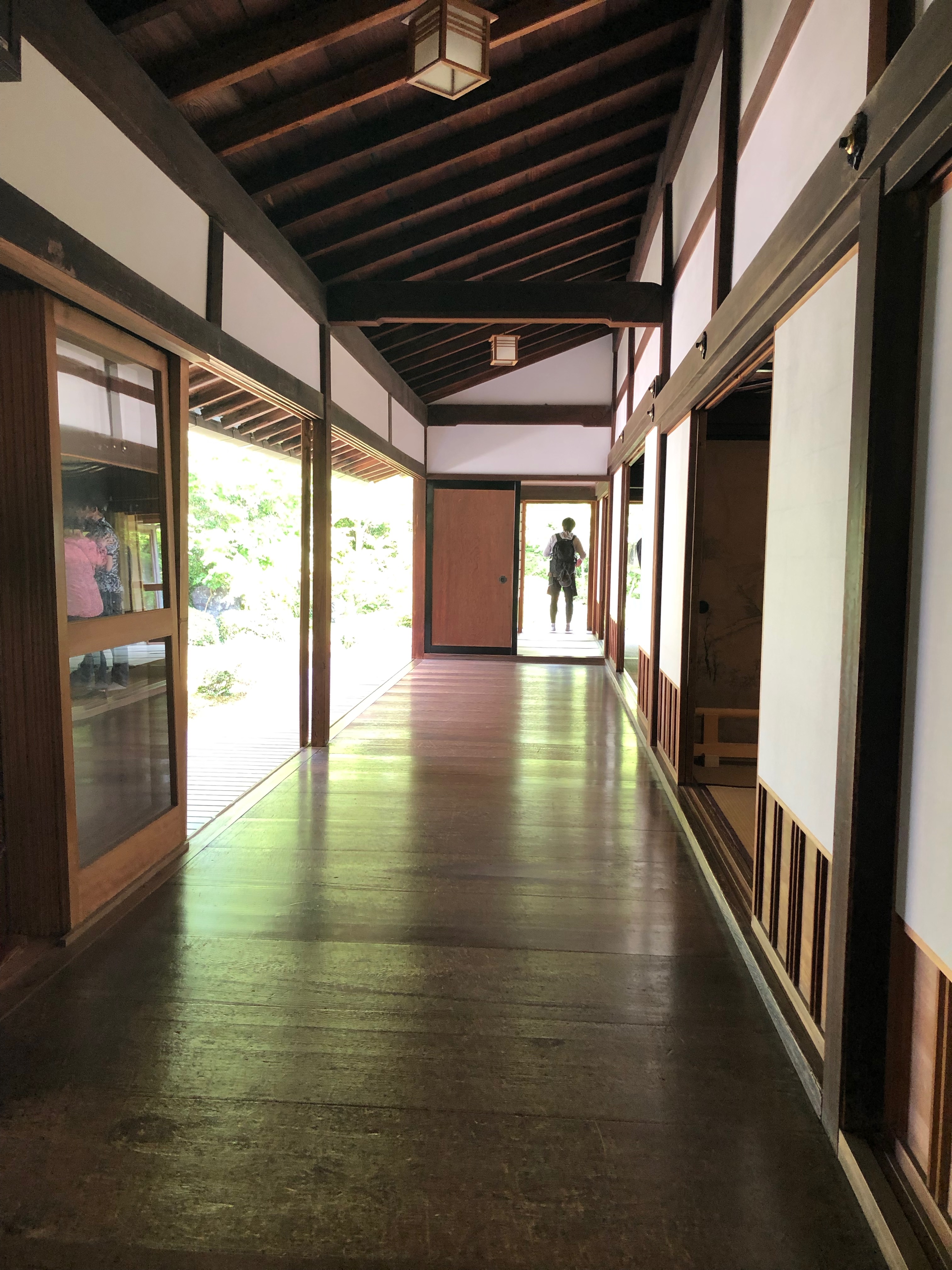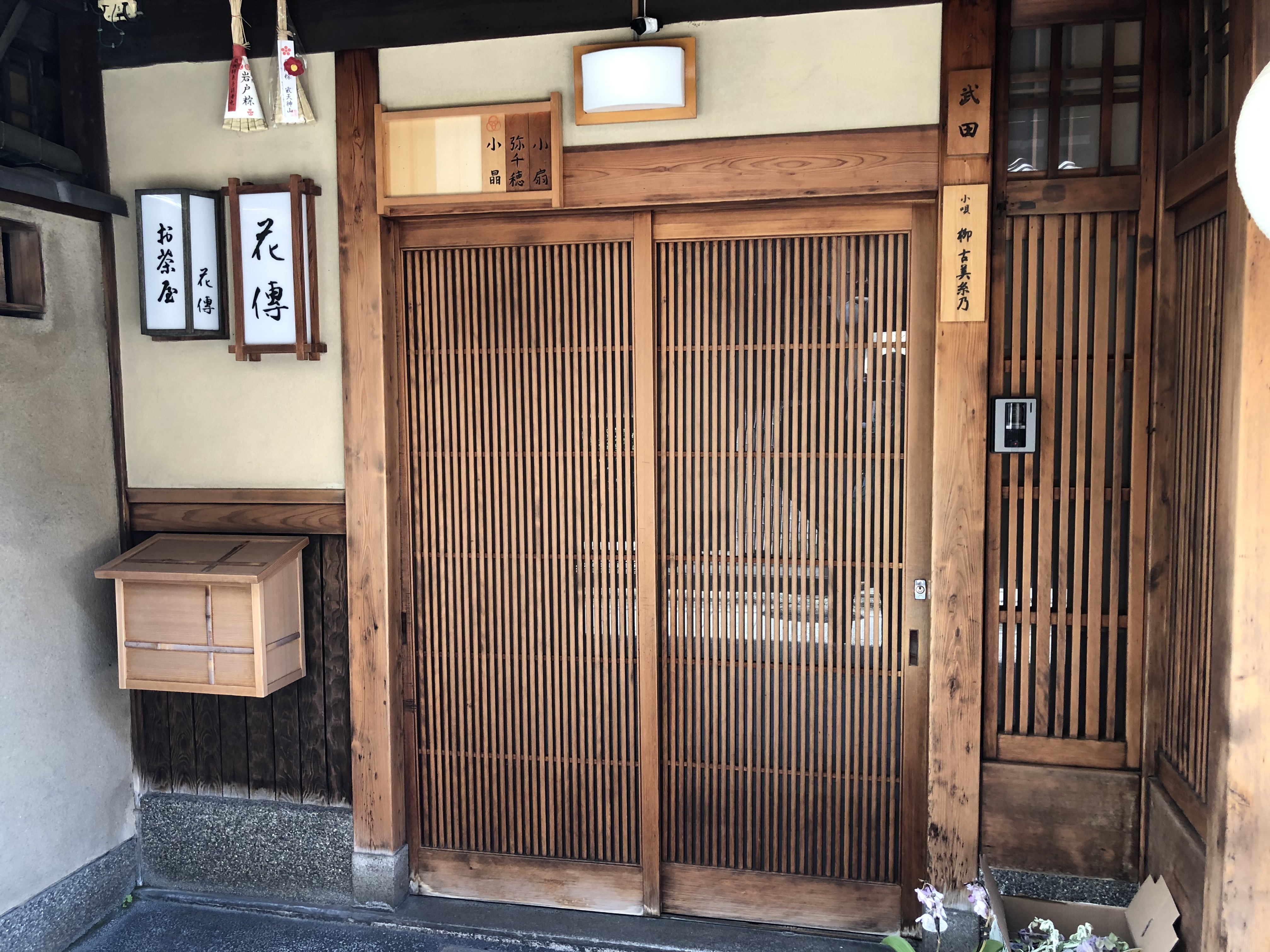Kyoto, Japan: A Tranquil Treat
Iwasakisan and his wife, Yoshiko, took Gerard, Rimi and me to Kyoto for a day-trip.
Here is Iwasakisan at the lunch we had that day. He is a totally cool guy.

Gerard is taking a picture of his food
But now I am ahead of myself.
Kyoto: Genkō-an Temple
First we went to the Zen temple of Genkō-an. Every view is curated, I suppose you could say. The title image serves as an excellent example. No matter where you look, you see something tranquil and beautiful.
Down the entry hallway: 
Out a window:

The square window on the right is the “Window of Confusion.” The four corners represent human suffering. The round window on the left is the “Window of Enlightenment.” It is corner-free.
In the main room:

When you come into a space like the one, above, kneeling to collect your thoughts or sitting quietly on a bench comes naturally.
Another room:

A glimpse of the magnificent garden:

An abbott founded the temple in the early 14th century. These days it is perhaps most famous for the ceiling in the main room, one panel of which looks like this:

You are looking at the floorboards of a stronghold where soon-to-be-defeated warriors engaged in ritual suicide in 1600. The color is from their blood, and you can clearly see a bloody footprint on one of the boards. Once their leader overcame his enemies, he had this floor installed as a temple ceiling so that the warriors’ souls could find peace.
Excellent idea.
Kyoto: Gion, Having Lunch
Next we went to Gion for lunch. This is the Kyoto neighborhood famous for being where maiko – Geishas-in-training – live and work. We had just driven into the neighborhood and were parking when I saw my first maiko.

Get a good look at the street. Iwasakisan owned the company in Osaka that paved it and a number of neighboring streets. It’s fair to say that when you pave a street, you get to know the people and businesses that live and work there.
Accordingly, Iwasakisan chose for us restaurant that had been a maiko house as recently as ten years ago. You saw a picture of our lunch table above. Here is the display on one side of the room:

The guitar is called a shamisen, and the drum is a shimedaiko. Among the many skills a maiko must acquire, mastery of these musical instruments is a must.
The restaurant is called Shinkiro ‘mirage.’

Gerard and Rimi out front
Kyoto: Gion the Neighborhood
After lunch we went on a tour of the neighborhood. Iwasakisan showed us the maiko school:

He explained to us the system. All up and down these streets (that his company paved), you find houses with these kinds of doors:

Above the left-hand side of this door is a wooden frame. It has space for 7 slats. The three on the right are filled. Those three have the names of the maiko who are in at that time.
Here the frame is on the right side of the door. There is space for three maiko, but only one is present at the moment:

What the street looks like:

Iwasakisan and Yoshiko checking things out
Through an open door, you catch a glimpse of maiko shoes:

We went to a fan boutique, Hangesho. Outside:

Inside:

Of course, Iwasakisan knew the owner, and she took us upstairs so that Rimi and I could play a game very popular with the maiko.
Kyoto: Gion and ‘Throw The Fan’ Game
It is called: tou sen kyo ‘throw-fan-game’

Rimi has her fan in position, ready to throw
You throw the fan at the thingie on top of the pedestal and try to knock it off. Depending on which way both the fan and the thingie fall, you get various points.
Here are the scoring possibilities.

It’s all in the flick – or rather the non-flick – of the wrist. You gotta keep it straight. Rimi and I went 10 rounds. It’s amazing how often we whiffed it.
I scored huge with this fan toss, below. Not only did I knock the thingie off the pedestal, but the thingie also remained upright.

The above scoring possibility is the fourth frame from the left in the upper panel on the scoring sheet. The thingie and my fan are on opposite sides of the panel.
You score even bigger if your fan leans against the pedestal. And then there’s nearly impossible one shown at the far right of the top panel of the scoring sheet. How the heck do you get the fan to slide under the thingie without knocking it off or having it fall over?
Ooooh, boy. Over the centuries, generations of bored maiko with time on their hands must have gotten really good at this game!
For a fantastic read about pre-World War II Gion, I recommend Arthur Golden’s Memoirs of a Geisha (1997). I loved it.
Kyoto: Sanjūsangendō
We wrapped up the day at the Buddhist temple, Sanjūsangendō. It means ‘thirty-three intervals’ in reference to the support columns in the structure.
Here is the only picture I have of it:

Left to right: Me, Gerard, Rimi, Iwasakisan and Yoshiko
The reason I have no further pictures is because the temple forbids photography. I love it! The visitor can concentrate on what they’re experiencing, not some mediated version of it they may never look at again.
And what they’re seeing inside is a huge hall filled with 1000 statues of Kannon, the Goddess of Mercy.
I didn’t know beforehand what the deal was with this temple, so when I rounded the corner into the hall and caught a glimpse of the magnitude of the display I actually teared up out of surprise and emotion.
Kyoto is so rich in treasures that after this third visit, I have still only scratched the surface.
Categorised in: Adventure, Blog, East Asia, Japan
This post was written by Julie Tetel Andresen
You may also like these stories:
- google+
- comment



